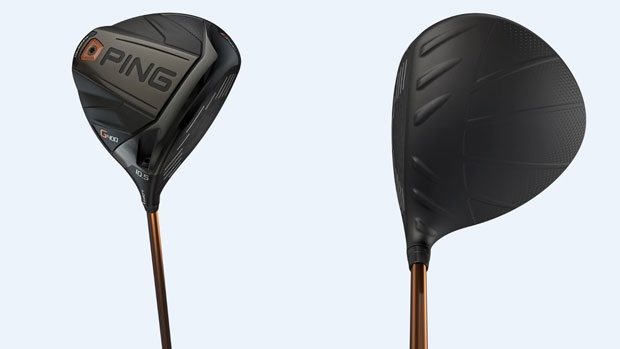Sep 7, 2017
G400 lineup debuts for Ping
Manufacturer takes quantum leap forward in club technology with smaller, faster driver; series includes updated fairways, hybrids and irons, TSN golf analyst Bob Weeks writes.
TSN.ca Staff

Ping has never been a company that rushes to market with new clubs. It has preferred to take its time, develop an idea fully and then launch.
That means that when there is a new Ping offering, it’s usually a significant step forward in technology. The G400 series fits that model. Last week, I had a chance to hit the driver and was suitably impressed.
First, the look: In an era when clubs are pretty much maxed out in size with 460 ccs being the largest allowable, Ping chose to make its new driver a bit smaller, coming in at 445 ccs. The company says that’s to make the club faster by improving aerodynamics, and also to deliver a higher moment of inertia.
The difference is small but significant, although when I put the club down at address, I wouldn’t have guessed it to be smaller. There are some design changes that are more noticeable, including the elimination of a ridge around the back of the driver head that was on the G model.
It’s been replaced by what Ping calls an “infinity edge.” The club also has a rounder shape than the previous model and the Turbulators on top are bolder than in past editions, which is to help with the aerodynamics. There are also some small dots on the top near the back, which I was told are simply cosmetic.
The face on the G400 is forged and named the T9S+. It is thinner and lighter than past iterations of Ping drivers and this allows for it to flex 16 per cent more, which contributes to an increase in ball speed.
That face, part of a multi-material head, also is responsible for a different sound off the clubface, one that’s pleasing and leads to better feel, too. Sound and feel work together and, when hitting this club, it seems solid to my ears and hands.
Apparently, Ping used computer simulation and music theory to get just the right sound on this driver.
On the bottom of the club is a tungsten weight inserted deep and back in the head. Ping says this, combined with the dragonfly design of the crown, have greatly helped the forgiveness of the driver.
When I hit this club, I was alternating it with a G driver. Comparing the two, I noticed a higher ball flight with the G400 and, as mentioned, the feel was exceptional. The acceptance of the G440 driver on pro tours was quick. Players who put the club into their bags include Lee Westwood, David Lingmerth and Canada’s Mackenzie Hughes.
The G400 line includes fairways, hybrids and irons. The irons are built using a unique heat-treating process that creates a high-strength stainless steel called Hyper 17-4. It makes the face 40 per cent stronger than traditional 17-4 stainless steel and allows for a thinner face and 18 per cent more face flexing. That leads to higher and longer shots with lower spin.
John K. Solheim, the third-generation president of Ping, likes to refer to the irons as being in the “game-enjoyment” class, saying while it delivers tour-like performance, it’s an easy-to-hit club.
The G400 series is on sale now and the reaction to the clubs has been strong, so much so that getting them in stores and pro shops was, at first, a concern. That’s been eased lately but indicates the strong demand for the new offerings from Ping.
